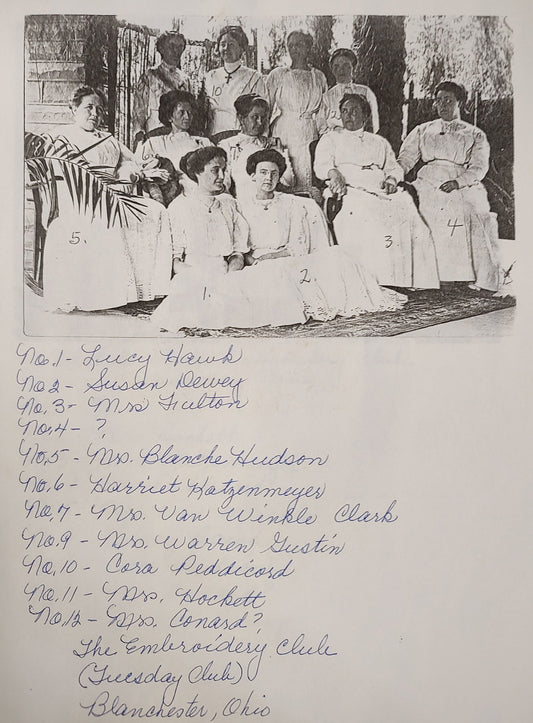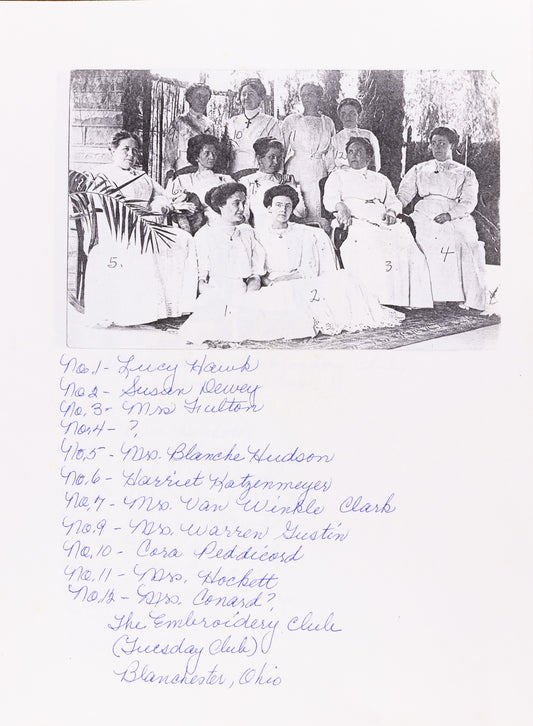Collection: The Blanchester Embroidery Club / Tuesday Club
The Blanchester Embroidery Club was formed in 1896. It was a social club for women to discuss a wide variety of topics including literature, fashion, art, music and history. Although clubs like this initially started as literary clubs they eventually became a source of reform for a wide variety of social issues driven by the female member's sense of moral duty to transform public policy.
The club met on the 1st and 3rd Tuesdays of the month. Meetings started at 2:00 p.m. and anyone late was fined 5¢ for tardiness. Many of these names were prominent families in Blanchester's early history. By 1927 the name had been changed to the Tuesday Club.
History of the Woman's Club Movement in the United States.
The club movement is an American women's social movement that started in the mid-19th century and spread throughout the United States. It established the idea that women had a moral duty and responsibility to transform public policy. While women's organizations had existed earlier, it was not until the Progressive era (1896–1917) that they came to be considered a movement. The first wave of the club movement during the progressive era was started by white, middle-class, Protestant women, and a second phase was led by African-American women.
These clubs, most of which had started out as social literary gatherings, eventually became a source of reform for various issues in the U.S. Both African-American and white women's clubs were involved with issues surrounding education, temperance, child labor, juvenile justice, legal reform, environmental protection, library creation and more. Women's clubs helped start many initiatives such as kindergartens and juvenile court systems. Later, women's clubs tackled issues like women's suffrage, lynching and family planning. The clubs allowed women, who had little political standing at the time, to gain greater influence in their communities. As women gained more rights, the need for clubs to exercise political and social influence became less important. Over time, participation in women's clubs has waned in the United States. However, many clubs still continue to operate and influence their communities.
Source: https://en.wikipedia.org/wiki/Women%27s_club_movement_in_the_United_States






